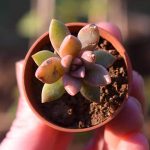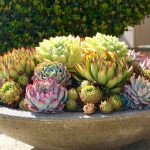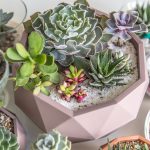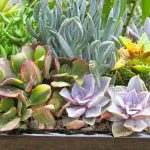In search of low-maintenance succulents that don’t demand constant sunlight? Discover a variety of succulent options with lower light requirements than typical houseplants. Explore our curated selection of favorite low light succulents, complete with names and captivating images!
While succulents are popular indoor plants worldwide, they often struggle without ample sunlight. Most succulents thrive in direct sun, posing a challenge if your living space lacks brightness. But fear not, as there are solutions for spaces with limited natural light.
Understand that low light doesn’t mean no light; these succulents may not need direct sunlight but benefit from indirect or filtered light. To ensure their well-being, consider moving them around occasionally within your space. Similar to low light houseplants, these succulents also need suitable conditions to flourish.
So, which succulents are ideal for low-light environments in your home? Delve into our collection of beloved succulents that can adapt to lower light settings once they become part of your indoor garden.
African Milk Tree
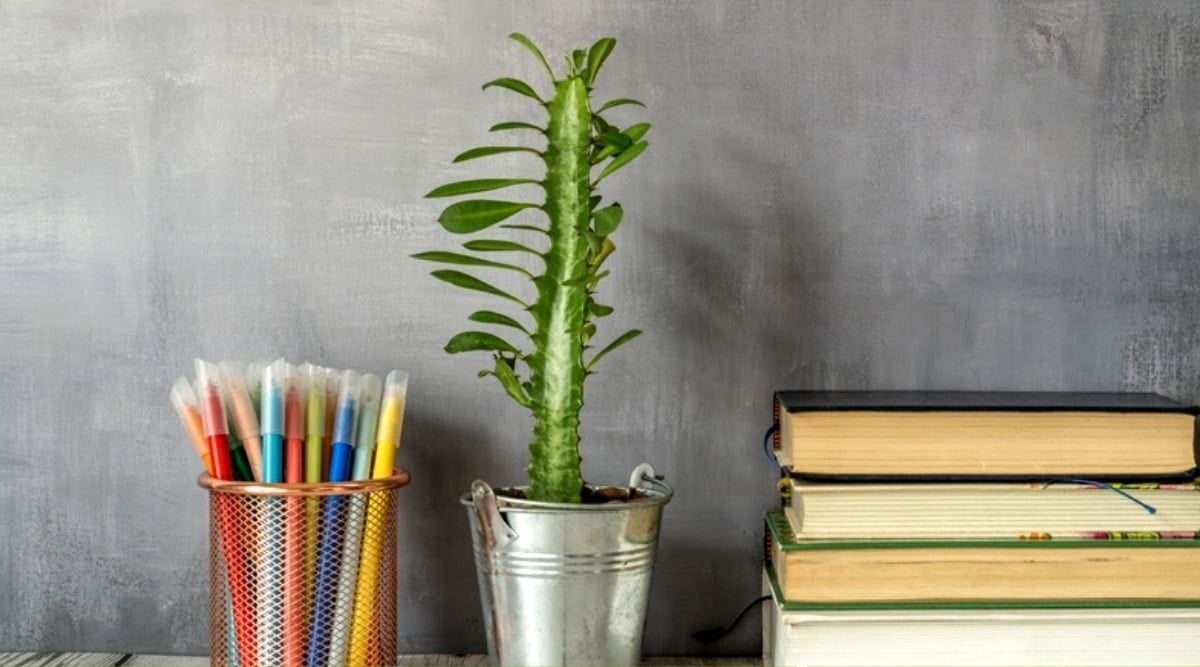
Scientific Name: Euphorbia trigona
- Plant Type: Perennial succulent
- Plant Size: 6-9 feet tall, 1-2 feet wide
- Watering Needs: 2-4 times monthly or when top inch of soil dries
- Sun Exposure: Indirect light or partial shade
The African Milk Tree, known for its cactus-like appearance, goes by various names like Cathedral Cactus and Good Luck Cactus.
With triangular stems adorned with thorns and teardrop-shaped leaves, this succulent’s Euphorbia trigona sap is toxic to humans and pets, causing skin irritations and other issues if ingested.
These plants flourish in indirect sunlight but should be shielded from excessive sun exposure to prevent leaf scorching. Unlike most succulents, the African Milk Tree doesn’t tolerate prolonged drought periods well.
Aloe Vera
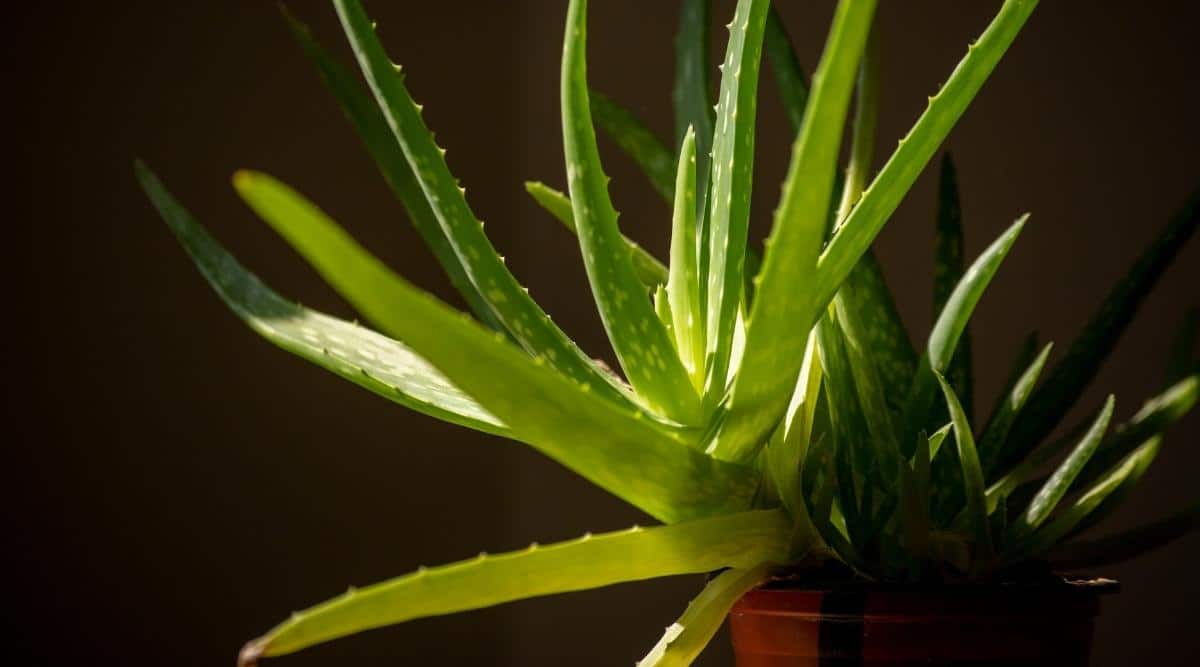
Scientific Name: Aloe barbadensis miller
- Plant Type: Perennial succulent
- Plant Size: 12-36 inches tall, 6-12 inches wide
- Watering Needs: When top 1-2 inches of soil dry
- Sun Exposure: Full sun to part shade
Aloe Vera, famed for its healing gel, boasts fleshy lance-shaped leaves emerging from a basal rosette. Caution should be exercised as the leaves are not for consumption, especially around pets and children.
Though a fast grower, this succulent can take several years to reach full size. Aloe plants prefer full to partial sunlight but can adapt to areas with bright shade.
Bear Paws
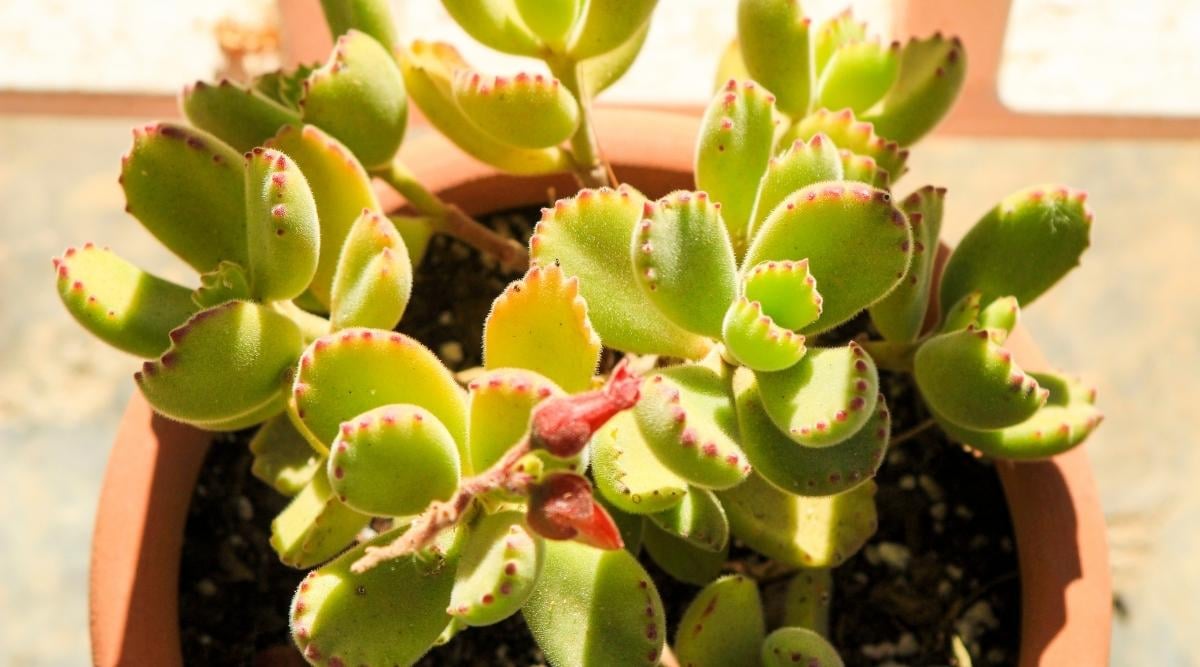
Scientific Name: Cotyledon tomentosa
- Plant Type: Perennial succulent
- Plant Size: Up to 1 foot tall
- Watering Needs: When top 1-2 inches of soil dry
- Sun Exposure: Full sun to part shade
Bear Paw plants stand out as cute additions to succulent collections, featuring thick fuzzy leaves with dark red edges resembling bear claws. With the right care, Cotyledon tomentosa can produce orange bell-shaped flowers during spring.
Embrace its unique appearance to introduce texture and contrast to your indoor garden. While it prefers indirect sunlight, Bear Paws can acclimate to partially shaded areas.
- Plant Type: Perennial succulent
- Plant Size: Ranges from 1 to 4 feet in length and 1 to 2 feet in width
- Watering Needs: Soil should be allowed to dry out 1-2 inches from the top
- Sun Exposure: Thrives in full sun to partial shade conditions
Burro’s Tail, also known as Donkey’s Tail or Lamb’s Tail, is a remarkably low-maintenance plant characterized by its rows of fleshy, tear-shaped leaves.
For optimal growth, position your Burro’s Tail on a sunlit windowsill that receives sufficient shade, especially in the intense afternoon sun. If the foliage starts losing its vibrancy and appears gray or dull green, it indicates that the plant needs more shade.
Occasionally, you might notice a white waxy substance on the leaves of your Burro’s Tail. Do not be alarmed; this is merely epicuticular wax, a protective secretion the plant produces to shield itself from excessive sun exposure.
Chandelier Plant
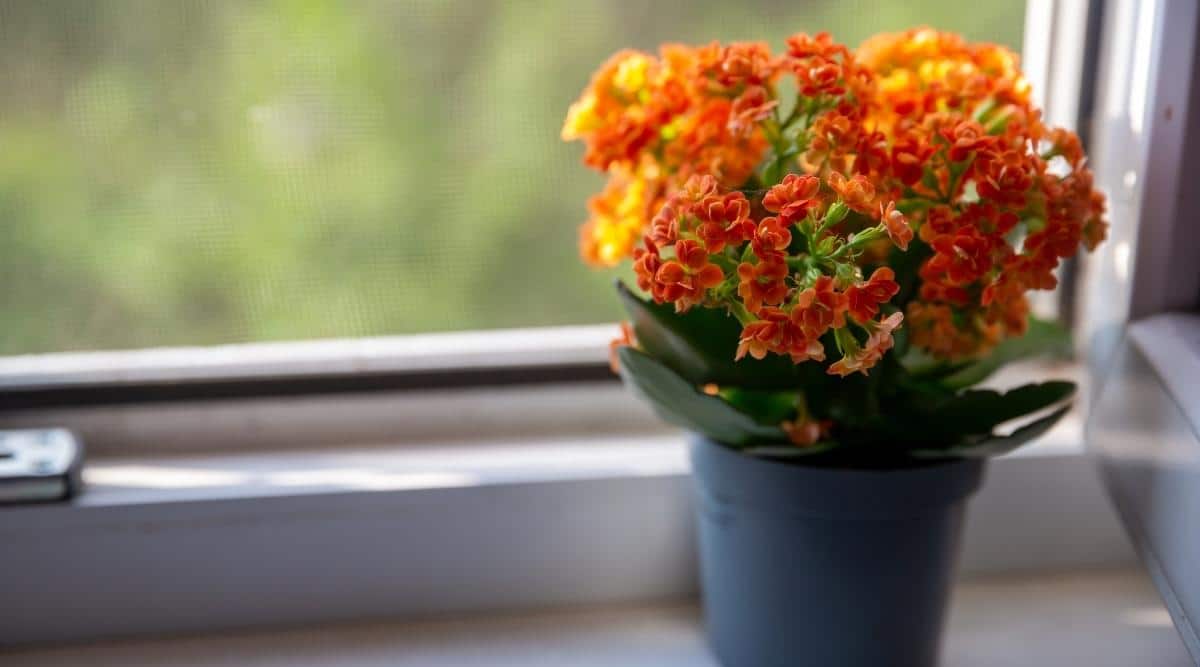
Scientific Name: Kalanchoe blossfeldiana
- Plant Type: Perennial succulent
- Plant Size: Typically reaches 6-18 inches in both height and width
- Watering Needs: Allow the top 1-2 inches of soil to dry out before watering
- Sun Exposure: Flourishes in full sun to partial shade conditions
The Chandelier Plant, or Florist Kalanchoe, is closely related to the Jade plant, boasting delicate scallop-shaped leaves.
Admired by plant aficionados for its effortless maintenance, distinctive foliage, and enduring blooms, Kalanchoe blossfeldiana can be found in an array of hues including pink, red, yellow, and white at plant stores. Ensure your Florist Kalanchoe is placed in a partially shaded spot that receives a fair amount of sunlight.
Christmas Cactus
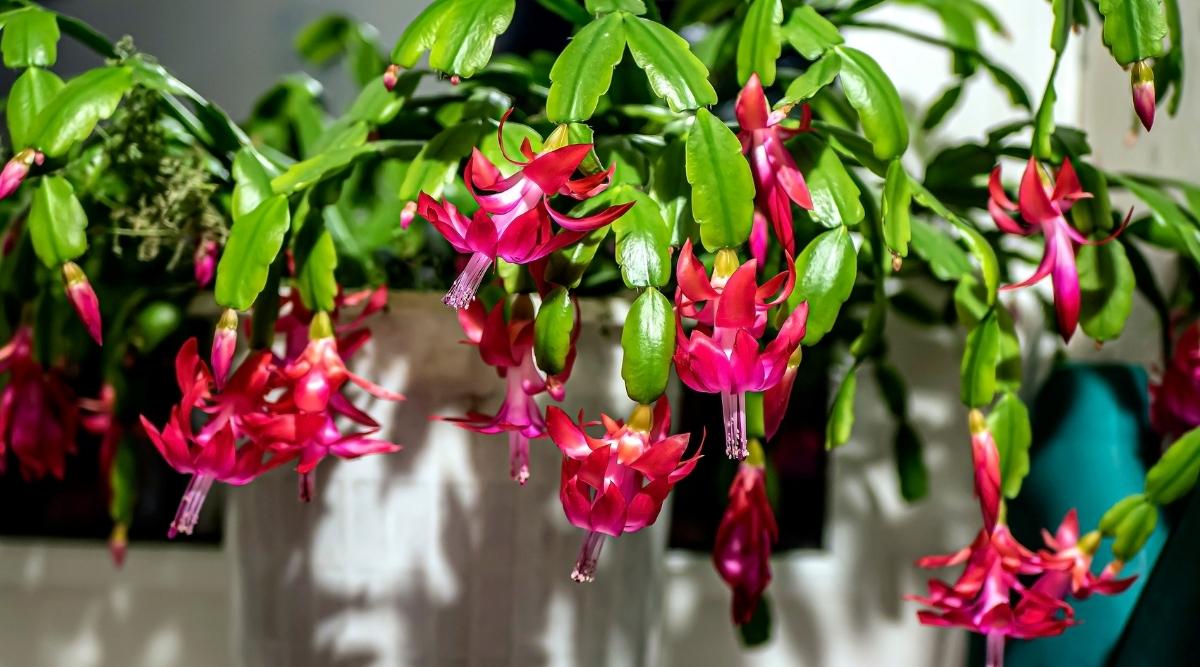
Scientific Name: Schlumbergera x buckleyi
- Plant Type: Perennial succulent
- Plant Size: Typically grows 6-12 inches tall and spans 12-24 inches in width
- Watering Needs: Water when the top 1-2 inches of soil are dry
- Sun Exposure: Enjoys full sun to partial shade
While Poinsettia is often associated with holidays, the Christmas Cactus can also bring festive spirit to your home. Despite its popularity, this plant is frequently mistaken for other succulents.
Hailing from tropical areas of Brazil, the Holiday Cactus can be moved outdoors during warmer months before being brought indoors for the winter season.
This perennial is content indoors throughout the year. To maintain its vibrant colors, ensure your Christmas Cactus is positioned in partial shade to prevent excessive sun exposure.
Cylindrical Snake Plant

Scientific Name: Sansevieria cylindrica
- Plant Type: Perennial succulent
- Plant Size: Typically reaches heights of 4-6 feet and spans 1-2 feet in width
- Watering Needs: Water when the top 1-2 inches of soil are dry
- Sun Exposure: Prefers full sun to partial shade conditions
The Cylindrical Snake Plant is a perennial succulent adorned with grayish-green striped leaves. Its cylindrical leaves set it apart from the more commonly known Snake Plant, also called Mother-in-Law’s Tongue.
For ideal growth, position your Cylindrical Snake Plant near north-facing windows where it receives minimal light, making it an excellent choice for homes lacking ample sunlight. Excessive sunlight may cause the leaves to turn yellow, so in shadier spots, your plant will still flourish, albeit at a slower pace.
Devil’s Backbone
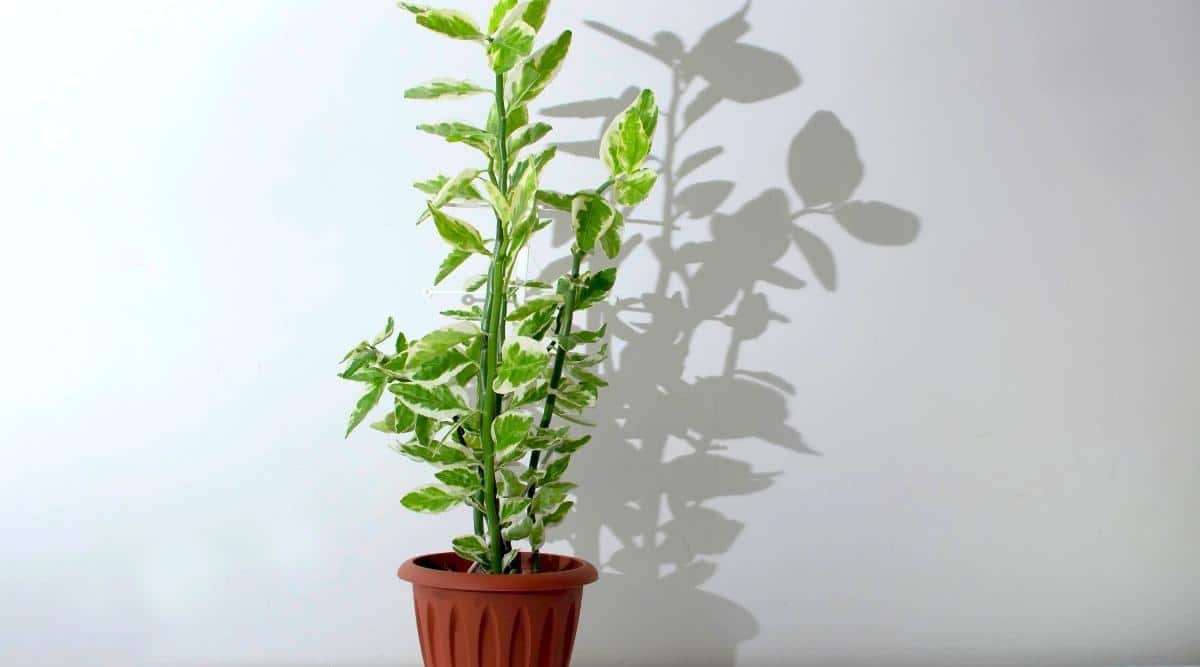
Scientific Name: Euphorbia tithymaloides
- Plant Type: Perennial succulent
- Plant Size: Reaches heights of 2-3 feet
- Watering Needs: Soil should be allowed to dry out 1-2 inches from the top before rewatering
- Sun Exposure: Thrives in bright, indirect sunlight to partial shade
The Devil’s Backbone, a renowned tropical plant for indoor settings, hails from various tropical regions, including parts of Africa and North and Central America, with specific populations in peril in Mexico.
This slow-growing succulent showcases variegated white and green leaves on undulating stems, tending to develop pinkish-red hues in warmer climates.Euphorbia tithymaloides thrive when bathed in gentle, filtered sunlight.
Happy Bean

Scientific Name: Peperomia ferreyrae
- Plant Type: Perennial succulent
- Plant Size: Can reach heights of up to 8 inches with a similar width
- Watering Needs: Water when the top 1-2 inches of soil feel dry to the touch
- Sun Exposure: Thrives in full sun to partial shade
Happy Bean, also known as Pincushion Peperomia, is one of the many Peperomia plants present in the vast genus.
Characterized by upright growth and bushy, curved foliage amidst tall stems, this plant might require some guidance in its growth trajectory to prevent erratic development of its curvy leaves. Optimal conditions for this species include windowsills with filtered light, although it can withstand environments with a touch of bright shade.
Hens and Chicks
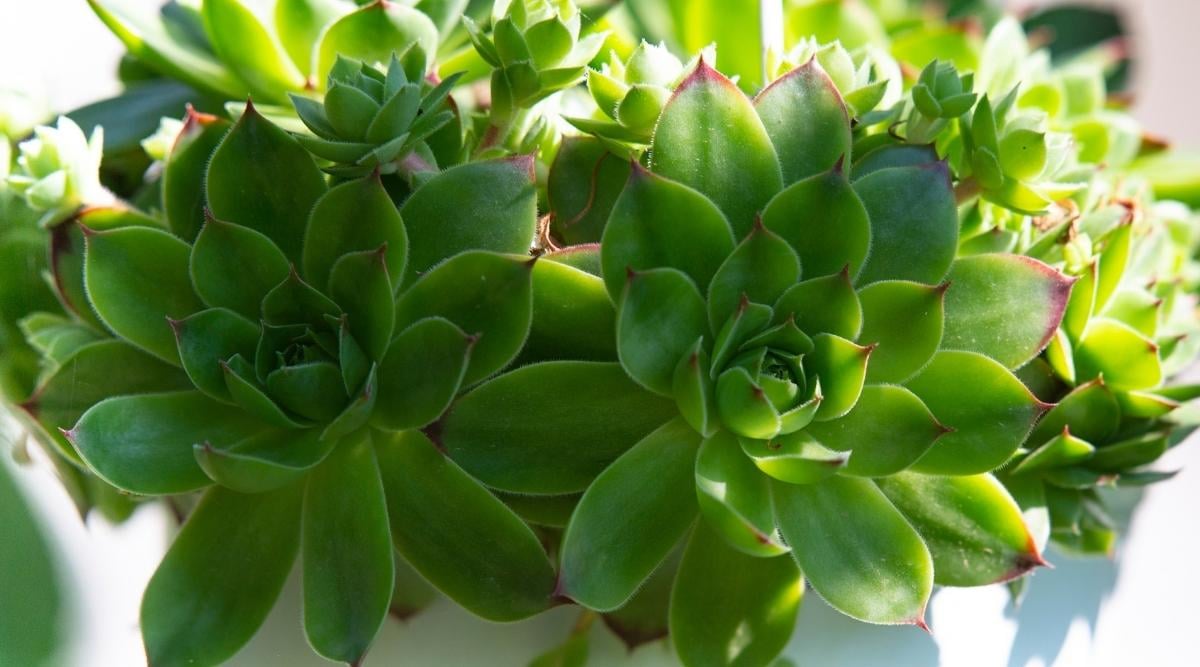
Scientific Name: Sempervivum tectorum
- Plant Type: Perennial succulent
- Plant Size: Can grow from 6-12 inches in height and 6-18 inches in width
- Watering Needs: Water when the top 1-2 inches of soil feel dry to the touch
- Sun Exposure: Prefers full sun but can adapt to partial shade
Hens and Chicks, perennial succulents, sprawl close to the ground and exhibit rubbery, thick, fleshy rosettes. As the main “hen” rosette matures, it produces offsets known as the “chicks”. Offering foliage in shades of blue, gold, green, red, or copper, these plants introduce vivid hues to indoor gardens.
Some variations of Hens and Chicks may develop a dense flower stalk embellished with star-shaped flowers in pink or red. Requiring minimal care, these plants are undemanding, yet you may need to prune out old hens that have withered.
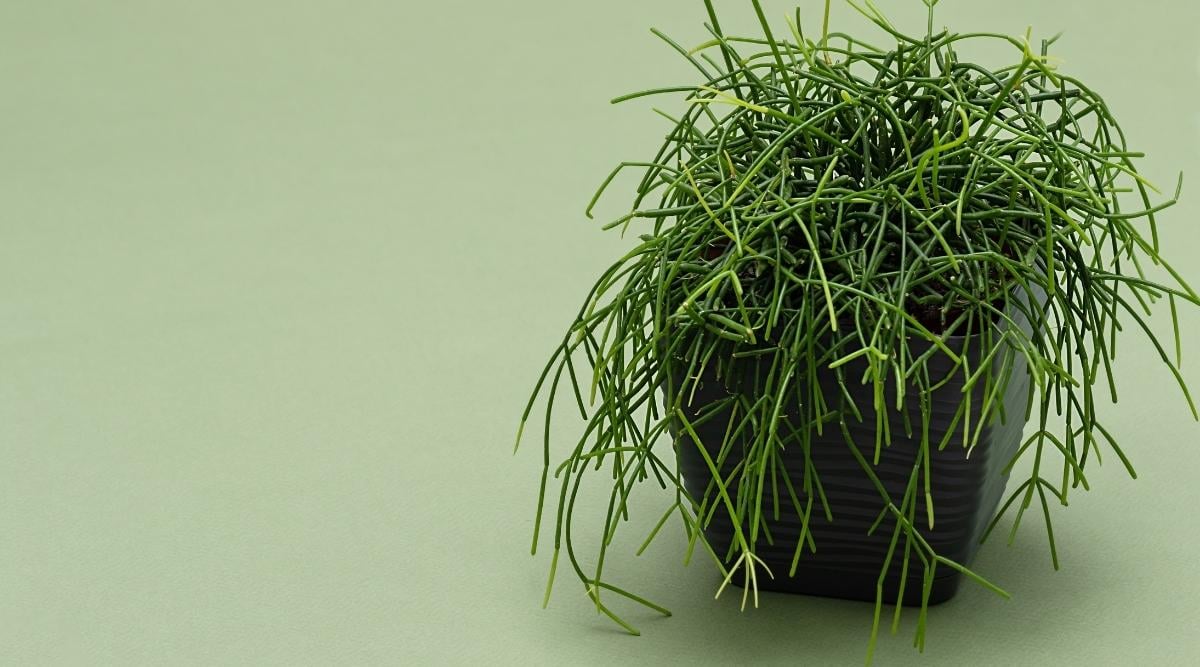
Scientific Name: Rhipsalis baccifera
- Plant Type: Perennial succulent
- Plant Size: 6 feet long and 2 feet spread (indoors)
- Watering Needs: When the top 1-2 inches of soil are dry
- Sun Exposure: Prefers bright to medium indirect light but can tolerate shady areas
Mistletoe Cacti are epiphytic plants famous for their gracefully trailing growth habits and tiny stems.
This Christmas-themed plant gets its nickname from the small, white fruits it produces after the flowers fade, giving the plant a similar appearance to a Mistletoe. These trailing stems look beautiful, flowing down the sides of a hanging basket.
Unlike most cacti, Rhipsalis baccifera is sensitive to harsh sunlight and prefers indirect light. It can thrive in lower light areas, though the lack of some filtered sun may inhibit its growth.
Moon Cactus
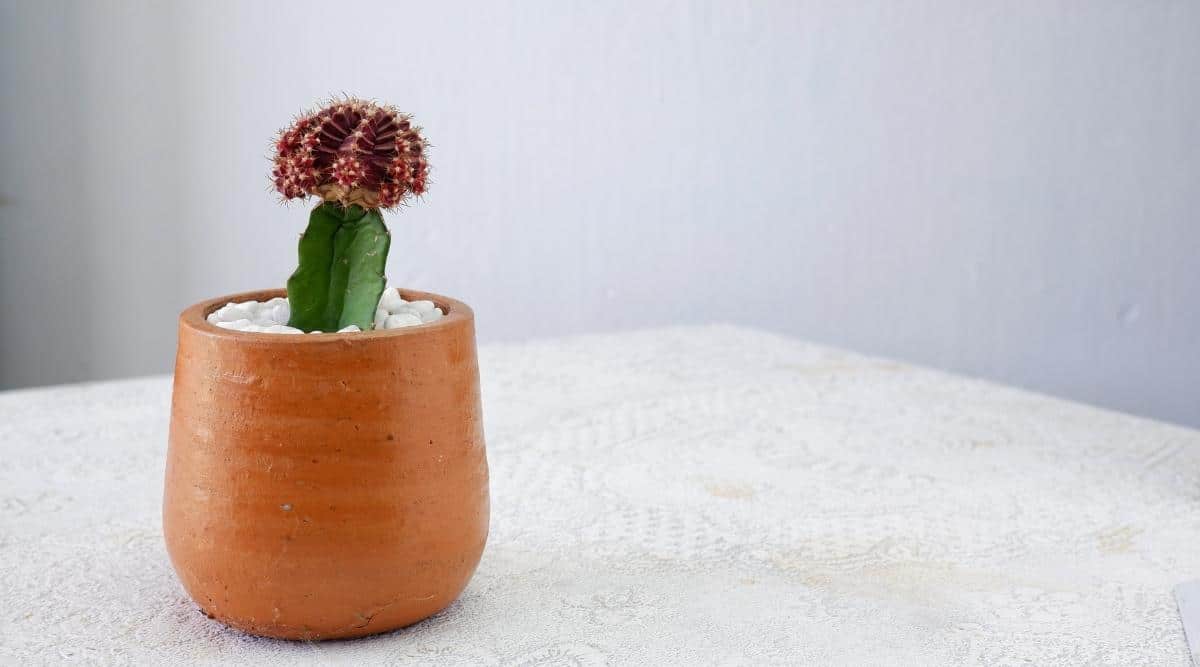
Scientific Name: Gymnocalycium mihanovichii
- Plant Type: Perennial succulent
- Plant Size: Varies, depending on the rootstock
- Watering Needs: When the top 1-2 inches of soil are dry
- Sun Exposure: Full sun to part shade
Moon Cacti produce bright red, orange, or yellow round tops, called scions, atop green rootstocks. The botanical name, Gymnocalycium mihanovichii, refers to the colorful scion. The rootstock host can be various species, though primarily a Hylocereus cactus. Once the two pieces connect, it is known as a Moon Cactus.
Like other succulents, the Moon Cactus requires a dry spell before heavy watering. While the top piece is tolerant of shade, the green rootstock prefers a lot of sunlight.
Choose an area that gets some indirect light, but avoid spots that get direct sunlight for more than 1-2 hours each day, or its colors may fade.
Mother-in-Law’s Tongue
Height: Typically growing between 6 to 8 inches tall.
Watering: Water when the top 1-2 inches of soil are dry.
Sunlight: Best in full sun to part shade conditions.
The Ocean Star Hahnii, a variety of Mother-in-Law’s Tongue, boasts dark, glossy funnel-shaped leaves that form an elegant rosette with horizontal green-gray variegation and bright yellow bands around the edges, creating a beautiful contrast.
Similar to other Snake Plant species, this variety thrives in bright to medium indirect light but can also withstand low-light areas. Providing more sunlight may enhance the coloration of the plant.
Ogre Ears Succulent
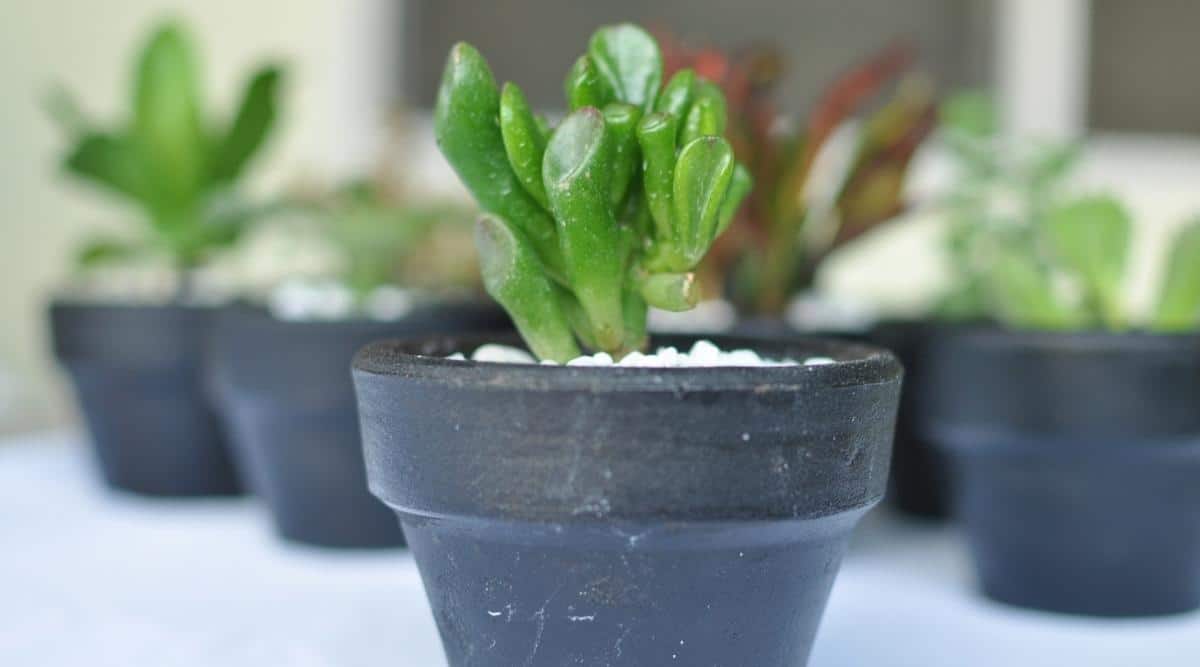
Scientific Name: Crassula ovata
- Plant Type: Annual or perennial succulent
- Size: Varies by species
- Watering: Water when the top 1-2 inches of soil are dry
- Sun Exposure: Ideal in full sun to part shade conditions
The Crassula genus, which includes the Green Jade Plant, features the Ogre Ears variety, named for its uncanny resemblance to the ears of the swamp-loving ogre, Shrek. It grows cylindrical leaves, some with reddish circular tips, thriving in bright, partial sunlight while tolerating shade.
Ox Tongue

Scientific Name: Gasteria spp.
- Plant Type: Perennial succulent
- Size: 4-24 inches tall and 12 inches wide
- Watering: Water when the top 1-2 inches of soil are dry
- Sun Exposure: Thrives in full sun to part shade conditions
Ox Tongue, belonging to the Gasteria genus, earned its name for its long, roughly-textured leaves. With some species featuring unique color patterns, mature plants may produce tubular flowers. It prefers lightly shaded areas in its native South Africa, thriving in filtered sunlight while tolerating shade better than other succulents.
Beaucarnea recurvata
- Description: A perennial succulent that can grow up to 6-8 feet tall with a spread of 3-5 feet. Water when the top 1-2 inches of soil are dry.
- Sunlight: Thrives in full sun to part shade.
Frequently mistaken for a palm tree, the Ponytail Palm showcases stunning tufts of strappy leaves emerging from its robust trunk, resembling a tropical aesthetic.
While it can reach over six feet in height, this slow-growing plant generally stays smaller indoors. Despite its preference for bright light, it can adapt to lower light conditions and is non-toxic to pets, although cats might find its leaves intriguing.
Crassula Falcata
- Description: It can reach up to 1 foot in height, with watering recommended when the top 1-2 inches of soil are dry.
- Sunlight: Enjoys full sun to part shade conditions.
This Crassula variety stands out due to its distinct propeller-shaped leaves and vibrant clusters of red blooms, although it may not flower indoors. It is resilient to drought and can tolerate partial shade despite preferring sunny spots.
Euphorbia amygdaloides’ Purpurea’
- Description: This perennial succulent grows up to 1 foot wide and 3 feet tall; water when the top soil layer is dry.
- Light: Flourishes in full shade.
The Purple Wood Spurge charms with its dark green foliage tinged with purple hues, complemented by striking yellow blossoms. This species adapts well to shade, making it an excellent choice for dimly lit indoor spaces.
Aloe broomii
- Description: Typically 2-4 feet tall with a comparable width; water when the top soil layer is dry.
- Sunlight: Enjoys full sun to part shade.
Known for its rosette shape and robust leaves adorned with dark thorns, the Snake Aloe, or Mountain Aloe, hails from South Africa’s rocky terrains. Its shade tolerance makes it an ideal candidate for shadowy corners.
Crassula perforata
- Description: Can grow up to 18 inches tall, with watering advised when the top soil layer is dry.
- Light: Prefers indirect sun.
The String of Buttons plant is a low-maintenance succulent that thrives in various lighting conditions, including low light areas, adding a touch of greenery to any space.
Strong and resilient, the succulent from the expansive Crassula clan is a striking addition to any collection. With its captivating appearance and robust nature, it easily adapts to varying light, water, and temperature conditions, making it an ideal choice for novice plant enthusiasts.
Featuring triangular leaves arranged in a spiral fashion around the stem, creating a stacked effect, this plant transforms into a mesmerizing sight when bathed in ample light, developing a charming pink tint. Widely popular and readily available wherever succulents are sold, the string of button plants, despite being able to tolerate some shade, thrives best with a moderate amount of light.
### String of Hearts
Embracing the scientific moniker *Ceropegia woodii*, the String of Hearts is a resilient succulent vine that flourishes effortlessly. Its dainty heart-shaped leaves, adorned with intricate marbled patterns, dangle elegantly from thin, string-like vines in a purple hue that beautifully contrasts the greenish-gray foliage. Best showcased in hanging baskets, atop tall shelves, or on window sills, these vines can extend over six feet in length as they mature, becoming a focal point in any indoor garden setting.
### Twisted Sister
Bearing the scientific name *Sansevieria trifasciata ‘Twisted Sister’*, this perennial plant is renowned for its vibrant green and gold variegated leaves that twist alluringly as they grow. Unlike its counterparts with upright growth habits, the Twisted Sister Snake Plant captivates with its unique appearance, resembling the Bird’s Nest Snake Plant variety. Thriving in bright, filtered sunlight, it can also tolerate shaded areas, albeit at a slower growth pace.
### Wax Flower
Also known as Hoyas, the succulent *Hoya carnosa* is a tropical gem, adorned with delicate, waxy blossoms that exude a delightful chocolate-vanilla fragrance. Discovered by Robert Brown and named in tribute to botanist Thomas Hoy, these Asian natives are cherished for their low-maintenance and gradual growth. While preferring southern or western exposure, they can adapt to partial shade, but sunlight remains crucial for their blooming.
### Windowpane Plant
Scientifically termed *Haworthia turgida suberecta*, Windowpane Plants showcase a charming rosette of translucent, triangle-shaped leaves. Their petite and slow-growing demeanor, along with their hardiness, make them an excellent choice for succulent arrangements. Although resembling other Haworthia varieties, this species stands out due to its short, triangular, translucent leaves. Thriving in indirect sunlight or partial shade, their unique shape and coloring make them a captivating addition to any succulent collection.In shaded spots, it becomes an alluring option for areas with minimal light.
Zebra Cactus
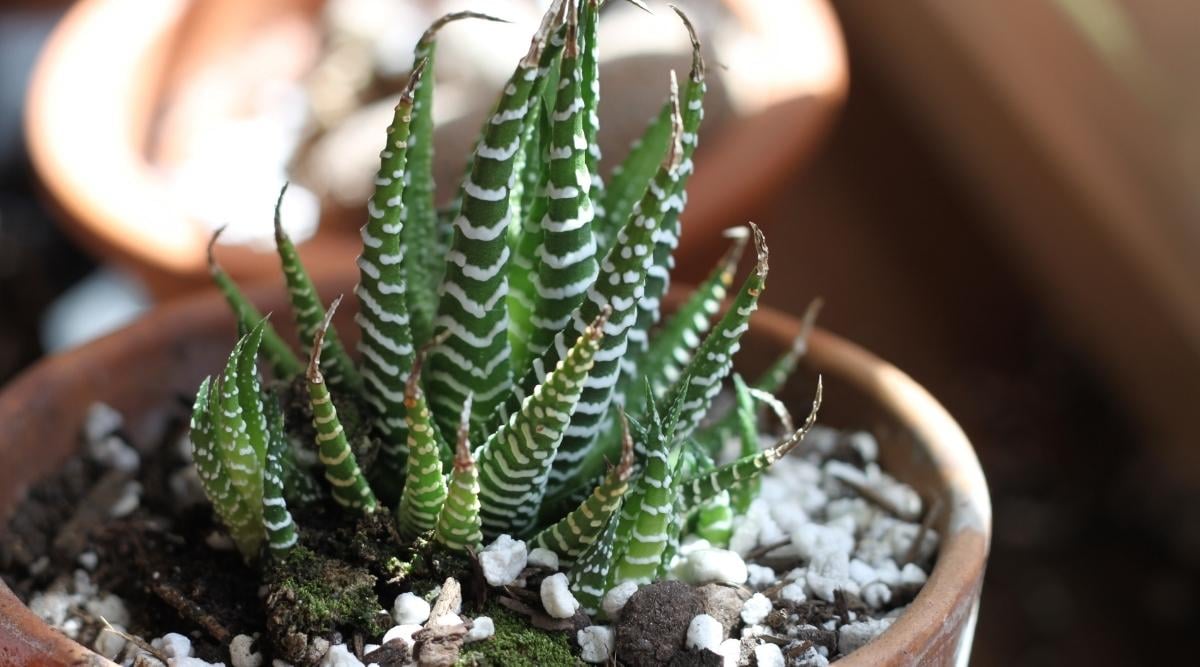
Scientific Name: Haworthiopsis attenuata
- Plant Type: Perennial succulent
- Plant Size: 3-5 inches tall and wide
- Watering Needs: Soil should be dry in the top 1-2 inches
- Sun Exposure: Full sun to partial shade
Although Zebra plants may have a spiky appearance, touching them reveals their surprisingly soft nature. These petite succulents cluster fleshy green leaves adorned with white pearly warts or bands, creating a unique look.
This charming plant elevates the aesthetics of mini glass terrariums or pots. Zebra Plants can bloom delicate lavender bell-shaped flowers in spring and summer, but flowering might be limited in low-light settings.
ZZ Plants
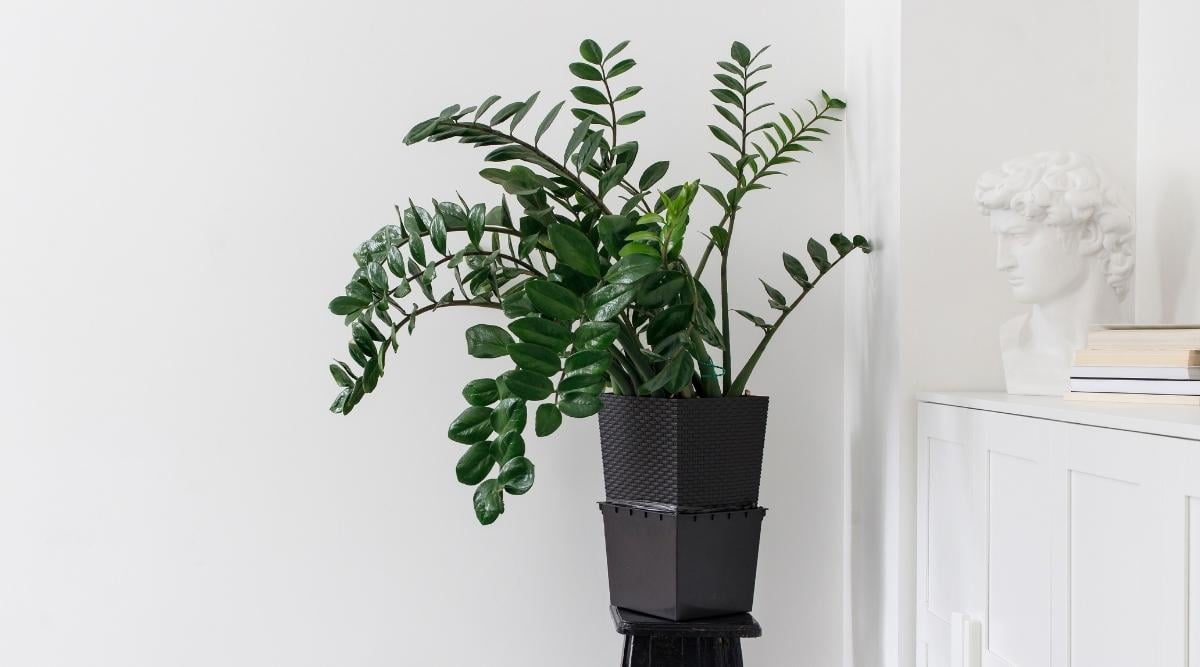
Scientific Name: Zamioculcas zamiifolia
- Plant Type: Perennial succulent
- Plant Size: Reaches 3-4 feet in height
- Watering Needs: Soil should be dry in the top 1-2 inches
- Sun Exposure: Thrives in low, indirect light, or partial shade
Lastly, ZZ Plants, known as Zanzibar gems, are effortlessly managed succulents flourishing in shady environments. These appealing plants are low-maintenance indoor additions featuring glossy, upward-growing oval leaves.
The glossy dark green leaves give off a polished appearance, often mistaken for artificial foliage. Keep in mind that this species is mildly toxic to animals and humans, so place them out of reach of pets and children.
A standout trait of ZZ Plants is their resilience to various care settings, thriving in bright, indirect light while also tolerating shade well.
Final Thoughts
The popularity of succulents continues to rise among both novice plant enthusiasts and experts. Each plant boasts a unique appeal, and most are low-maintenance.
While succulents are renowned for their drought resistance, their shade tolerance isn’t as well-known. Despite many species necessitating full sun, there are several that can handle shade, with some even thriving in dimly lit areas.
For instance, Snake Plants offer more than 70 varieties of shade-tolerant plants to select from, some of which are featured above. These succulents require some light, but in homes with low-light conditions, they can help brighten up darker corners.


